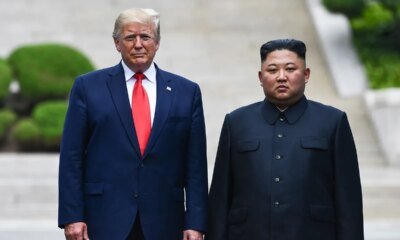INTERNACIONAL
Trump must triple severely outdated nuke arsenal to outpace China and Russia, report warns
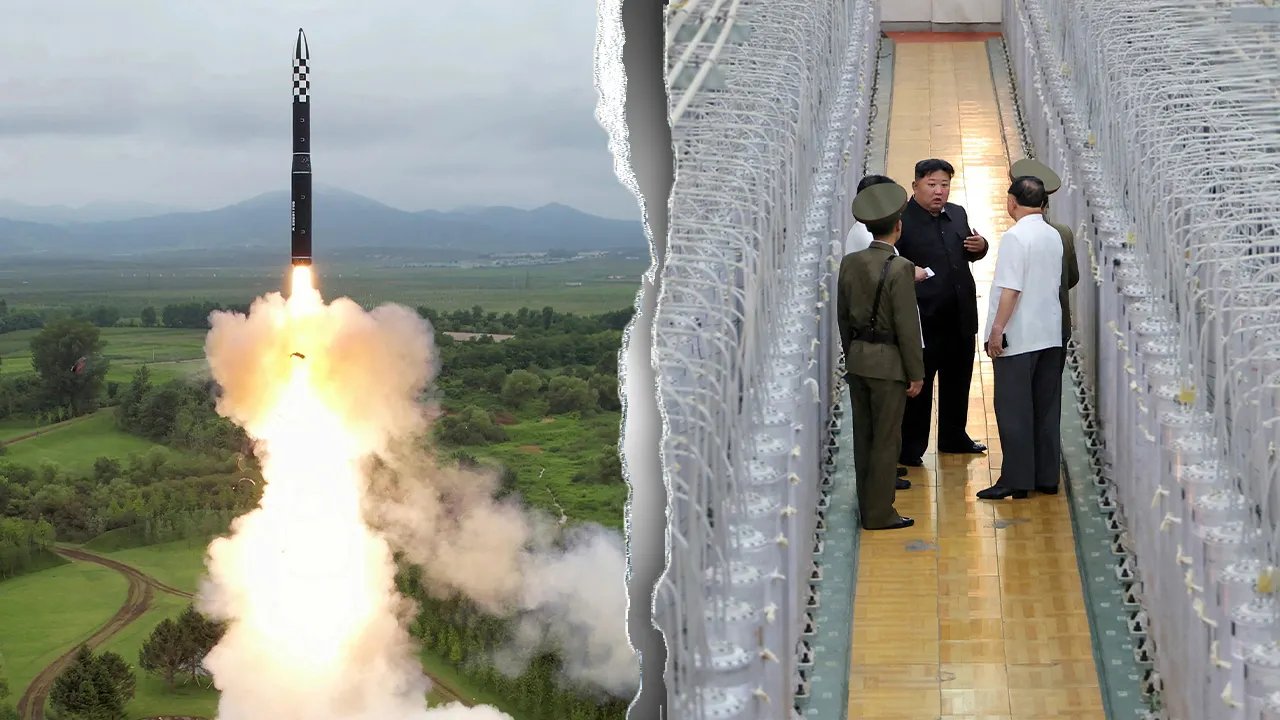
NEWYou can now listen to Fox News articles!
FIRST ON FOX: A new report warns the U.S. nuclear arsenal is dangerously outdated and too small to confront growing global threats — and recommends nearly tripling the number of deployed American warheads by 2050.
The report, first obtained by Fox News Digital, argues that America’s current force of about 1,750 deployed nuclear weapons leaves the nation vulnerable in an era when Moscow, Beijing, and Pyongyang are all expanding their arsenals at breakneck speed.
China alone is building 100 new nuclear weapons a year, according to the Pentagon, and is on track to reach strategic parity with the U.S. by the mid-2030s.
«The newest warhead that we have was built in 1989,» Robert Peters, author of the Heritage report, told Fox News Digital.
HOW US SHOULD RESPOND AFTER CHINA REJECTS TRUMP NUCLEAR TALKS, SHOWS OFF NEW WEAPONS AT PARADE
Russian military launches a Yars intercontinental ballistic missile during drills at an airfield in Russia (Russian Defense Ministry Press Service via AP, File)
«The force size that we have now … That was a force design that came up when President Obama was in office in 2010, and the assumptions were in 2010 that there would be no more real competition between the United States and Russia, and China was not even a real player on the nuclear field.»
The report, authored by Robert Peters of Heritage’s Allison Center for National Security, proposes that Washington expand its force to roughly 4,625 operationally deployed nuclear weapons by 2050.
That number would include about 3,500 strategic warheads — carried by intercontinental ballistic missiles (ICBMs), ballistic missile submarines, and bombers — and about 1,125 non-strategic weapons, such as gravity bombs and theater-range missiles.
It comes amid warnings that Moscow maintains thousands of non-strategic nuclear weapons in Europe, outnumbering U.S. stocks by as much as ten to one, while China races to deploy stealth bombers, submarine-based missiles and even orbital strike systems. North Korea already possesses about 90 warheads and continues testing missiles that can reach the U.S. homeland.
«We’ve got an arsenal today that is decades beyond its planned life cycle, and a force construct that was designed for a very benign world.»
CHINA’S GROWING NUCLEAR ARSENAL AIMS TO BREAK US ALLIANCES AND DOMINATE ASIA, REPORT WARNS
Peters’ proposal envisions a modernized force including new Sentinel ICBMs, Columbia-class ballistic missile submarines, nuclear-capable B-21 stealth bombers, long-range cruise missiles, and theater-range hypersonic weapons. The plan would still keep U.S. forces below Cold War levels but significantly above today’s posture.
It lays out a plan for regional nuclear allocations in each theater, with the largest number of assets, 3,200 warheads, being placed under Northern Command and focused on homeland defense. Some 750 warheads would be placed in Europe and 675 in the Indo-Pacific region.
It calls for Sentinel ICBMs to replace Minuteman III and B-21 and B-52 jets with new long-range standoff cruise missiles.
During the Cold War, the U.S. fielded tens of thousands of warheads, deployed in Europe, Asia and at home. The new 2050 arsenal would still be far smaller than Cold War levels.
«A U.S. President with some regional nuclear options but only token damage-limiting capacity would quickly be confronted during a limited nuclear conflict with two unpalatable options: surrender or threaten widespread attacks on the adversary homeland, thus inviting an in-kind response, meaning suicide,» the report warns.
Skeptics often ask why nations need thousands of nuclear weapons when a single warhead can level a city. Peters argues that this is a misconception rooted in Cold War imagery of mushroom clouds over Manhattan.

North Korea possesses around 90 nuclear warheads. ( KCNA via REUTERS)
In reality, most modern nuclear warheads are not designed for «city busting» but for striking enemy nuclear forces — silos, missile fields, and command-and-control centers. China, for example, is building up to 500 hardened ICBM silos in remote deserts. Military planners assume it could take at least two U.S. warheads to guarantee destruction of each site.
As Peters puts it, «the goal is never to get to this point. That’s why you have nuclear weapons, to make sure you never get to this point.»
It’s unclear whether the current political leadership would heed Peters’ recommendations. President Donald Trump has proposed «denuclearization» talks with U.S. adversaries.
«Trump very understandably doesn’t like nuclear weapons,» Peters said.
But, he added, «we tried [denuclearizing] under President Obama in 2009 and 2012 and no one followed.»
«Tremendous amounts of money are being spent on nuclear, and the destructive capacity is something we don’t even want to talk about today, because you don’t want to hear it,» Trump mused in remarks to the World Economic Forum at Davos, Switzerland, in February.
«I want to see if we can denuclearize, and I think it’s very possible,» suggesting talks on the issue between the U.S., Russia and China.
President Vladimir Putin announced Russia would suspend its participation in the New START treaty in 2023 over U.S. support for Ukraine. Russia had frequently been caught violating the terms of the deal. But China has never engaged in negotiations with the U.S. over arms reduction.
North Korea has rejected any suggestion of denuclearizing from the U.S.
Read the report below. App users: Click here
In September, Russia proposed a one-year extension of the New START treaty, which technically expires in 2026, but the White House has yet to respond to that proposal.
Expanding the arsenal won’t be cheap. But at around $56 billion, the U.S. only spends around seven percent of the defense budget on nuclear weapons, Peters argues.
The report also calls for nuclear capabilities to be deployed forward to Finland and Poland, a proposal that is certain to rattle the Kremlin and would cut strike times down from hours to minutes.
CLICK HERE TO DOWNLOAD THE FOX NEWS APP
Nuclear weapons are currently hosted in Italy, Germany and the Netherlands, — bases chosen in the Cold War when they sat just 150 miles from the Soviet front line. But Russia’s front line has now moved 800 miles east.
He made a similar call for nuclear capabilities to be placed in South Korea. Washington periodically deploys US nuclear-armed submarines to South Korea and involve Seoul in its nuclear planning operations in exchange for an agreement from Seoul not to develop its own nuclear weapons.
nuclear proliferation,conflicts defense,china,russia,north korea,south korea,europe
INTERNACIONAL
Francia vuelve a las calles contra las medidas de austeridad del gobierno: encabezan la marcha empleados de Stellantis, en seria crisis

Partió la manifestación en parís
Medidas del primer ministro: reducción de impuestos
El PS en apuros
Manifestaciones más reducidas
La Francia Insumisa censura al gobierno
INTERNACIONAL
‘Come-to-Jesus meeting’: Military community reacts to Hegseth’s get fit, get in line or get out speech
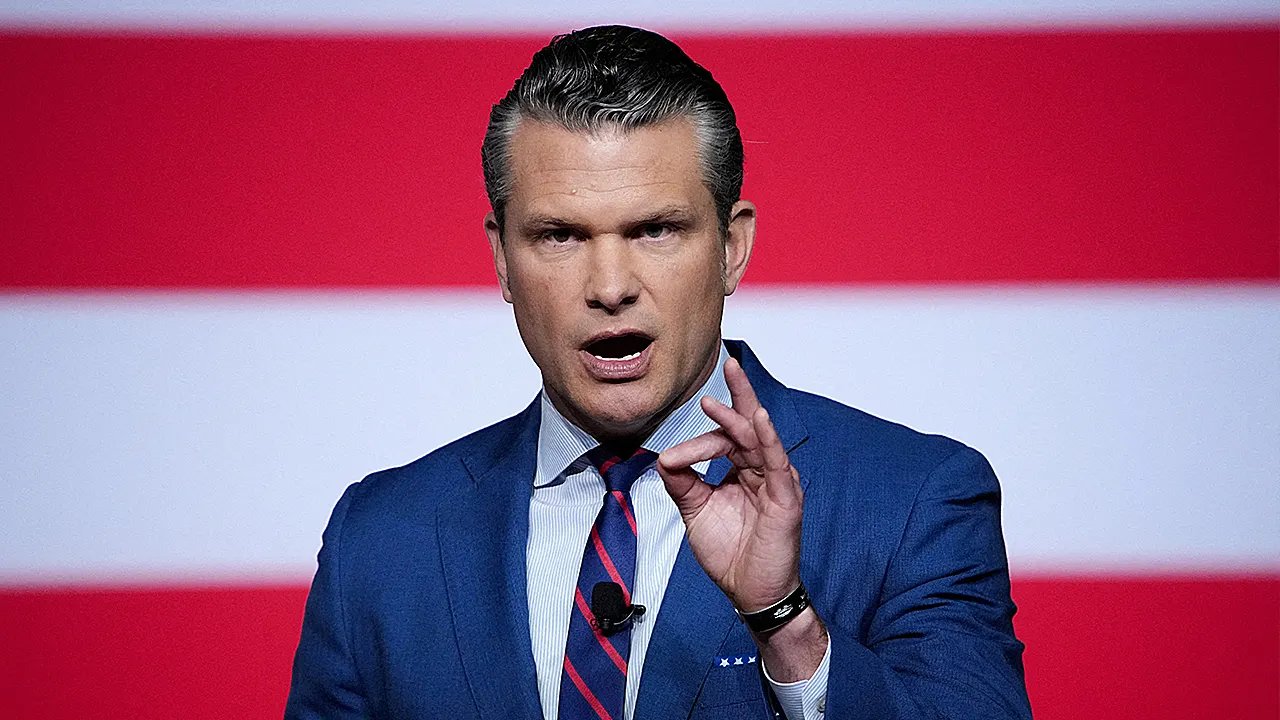
NEWYou can now listen to Fox News articles!
War Secretary Pete Hegseth delivered a blunt message to military leaders from around the globe this week: get fit, get on board with the Trump agenda or get out.
It marked the first time generals from around the world had been summoned to convene with the secretary, and many had expected closed-door announcements on trimming the general officer corps, drawing down forces in the Middle East and Europe or cutting civilian and contractor roles.
Instead, what they got was a televised address from Hegseth and President Donald Trump. The secretary pushed a populist message of handing decision-making back to the warfighter, requiring senior leadership to perform physical training in line with lower-ranking officers and bringing uniformity back to the force.
Garrett Smith, an active-duty Marine Corps reservist and CEO of defense tech firm Reveal, said the spectacle was unusual but not without precedent.
TRUMP DECLARES ‘REAWAKENING’ OF ‘WARRIOR SPIRIT,’ UNWAVERING SUPPORT FOR MILITARY: ‘I HAVE YOUR BACKS’
War Secretary Pete Hegseth speaks to military leaders during a meeting at Marine Corps Base Quantico, Va. (Kevin Lamarque/Reuters)
«At a first level, at any big multinational corporation or big organization, when there’s a new boss, it’s totally reasonable to call in all your regional managers and VPs for a setting of tone, to reconfirm the agenda, to ensure alignment. So all of that makes sense,» Smith said. «But obviously, these are not normal times. This is the Trump administration. So it’s going to come with a bunch of enhanced drama and mystique and weirdness about it… the policy and the action might have been totally great, but much of the country is going to be left wondering, what was that really about?»
Even so, Smith argued, the underlying message was unmistakable: «A return to warfighting and preparation for winning wars as the priority mission of the department. There was a perception we’d strayed from that, that it had become just one mission among many. Reconfirming that this is the mission is really important — investing in a warfighting ethos.»
At a moment when the Trump administration is on alert for internal resistance to its agenda, the speech served as a reminder to commanders stationed far from Washington that their authority ultimately flows from the president.
«This is a historic come-to-Jesus meeting,» said Chad Robicheaux, a former reconnaissance Marine who deployed to Afghanistan eight times. «The message is clear: the days of divisiveness, resistance, and undermining leadership are over.»
«It was crystal clear — generals and admirals are on notice: comply and enforce these new policies and culture or be fired. No more woke leaders,» said Amber Smith, a combat veteran and advisor with the Coalition for Military Excellence.
«The topic today is about the nature of ourselves, because no plan, no program, no reform, no formation will ultimately succeed unless we have the right people and the right culture at the Department of War,» Hegseth told the group.
He emphasized that combat fitness tests would be gender-neutral and that high-level officers would need to meet standards.
«It’s completely unacceptable to see fat generals and admirals in the halls of the Pentagon and leading commands around the country and the world. It’s a bad look. It’s not who we are,» he said. «Whether you’re an airborne Ranger or a chairborne Ranger, a brand new private or a four-star general, you need to meet the height and weight standards and pass your PT test.»
Hegseth announced that all personnel must pass physical training tests and meet weight requirements twice a year, and would be required to work out daily. «We’re not talking, like, hot yoga and stretching,» he said. «Real hard PT.»
That represented a departure from previous years, when fitness standards often fell away once officers reached higher ranks and desk-bound commands.
HEGSETH INSTATES ‘HIGHEST MALE STANDARD ONLY’ FOR COMBAT, OTHER CHANGES, DECLARING DEPT. OF DEFENSE ‘IS OVER’
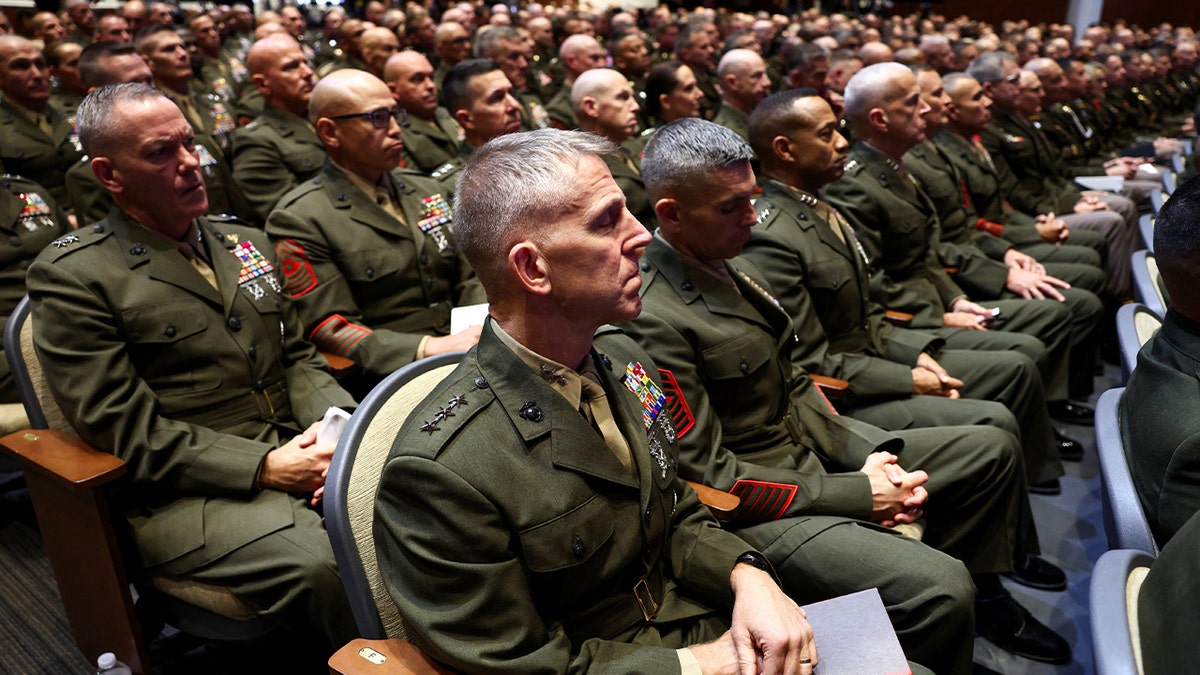
Hundreds of generals were called to Quantico on a week’s notice for Hegseth’s address. (Kevin Lamarque/Reuters)
Smith, who comes from the infantry, said the focus on standards for physical readiness was part of that shift. «If we want to present a deterring force to the world so we don’t have to go to war, we have to be ready to win the next war. That is the deterrent force we project,» he said.
At the same time, Smith acknowledged the cultural edge of Hegseth’s message. «There was an obvious and very clear anti-woke, anti-social-justice threat in there. That is unique to this administration, and it has to be a part of their message every time. That’s not a surprise given the last four or five years.»
From Trump, generals saw a preview of what is expected in the forthcoming national defense strategy: a renewed focus on homeland defense and U.S. dominance in the Western Hemisphere. Trump suggested crime-ridden U.S. cities could even serve as «training grounds» for troops.
«I told Pete we should use some of these dangerous cities as training grounds for our military — National Guard, but military — because we’re going into Chicago very soon,» Trump said.
HEGSETH TELLS TROOPS TO RESIGN IF THEY OPPOSE HIS PLAN TO SCRAP ‘WOKE’ POLICIES AND RESTORE WARRIOR ETHOS
Hegseth’s message carried a personal edge rooted in his own military experience. A former Army National Guard officer who served in Iraq and Afghanistan, Hegseth left the service at the rank of major — well short of the general officer tier he now oversees.
That trajectory has long colored his outsider posture toward the Pentagon brass, giving him credibility with rank-and-file troops but also fueling what some see as a chip-on-the-shoulder tone toward those who climbed higher in the hierarchy.
His insistence that generals shed weight, train daily and live by the same standards as junior officers reflects both his populist instincts and his lived sense of being closer to the warfighter than the war planner.
«I can’t really imagine a scenario where a general needs to be able to run across a battlefield,» one veteran mused.
«It felt a bit theatery,» one junior officer said of the speech. «But he’s right that generals should have to meet the same standards they expect of the people they lead.»
CLICK HERE TO DOWNLOAD THE FOX NEWS APP
«The future of the military and ‘war’ department finally is starting to look better, and I’m happy all that bulls— that happened in the past was addressed, and I don’t have to deal with it,» said another.
Hegseth also said he would lift guardrails aimed at preventing bullying and hazing and «empower leaders to enforce standards without fear of retribution or second-guessing.»
«No more walking on eggshells.»
He told military officers in the room that if they didn’t like his message, «then you should do the honorable thing and resign.»
pete hegseth,defense,military,politics,pentagon defense
INTERNACIONAL
El canciller de Francia consideró que Hamas debe aceptar su rendición
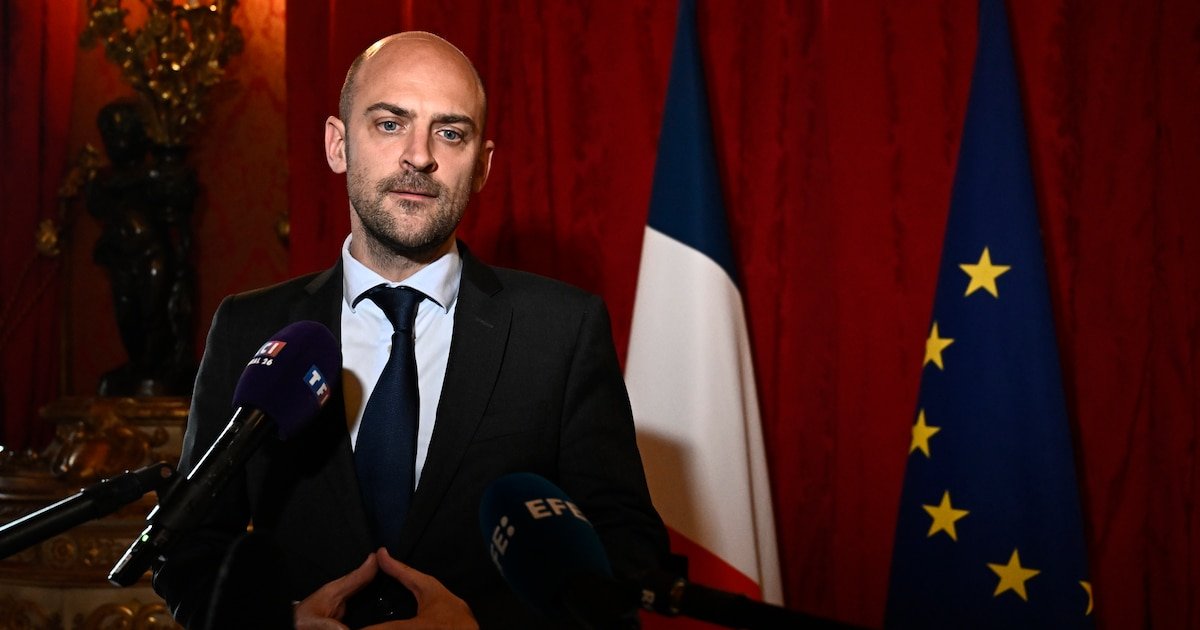
El canciller de Francia, de visita en Arabia Saudita, consideró este jueves que Hamas “perdió” frente a Israel y que debe aceptar su “rendición“, en momentos en que el grupo terrorista palestino examina un plan de Estados Unidos para poner fin a la guerra en Gaza.
“Hamas tiene una responsabilidad muy fuerte en la catástrofe vivida por los palestinos. Ha perdido. Debe resignarse a su propia rendición“, declaró el ministro Jean-Noël Barrot a AFP.
Tras la publicación, el lunes, del plan de paz del presidente estadounidense Donald Trump, aprobado públicamente por el primer ministro israelí, Benjamin Netanyahu, Barrot reiteró este jueves el apoyo de Francia a esa iniciativa.
“Aplaudimos el plan y queremos trabajar en su puesta en marcha para poner fin a la guerra, al hambre y al sufrimiento en Gaza”, dijo Barrot.

El ministro insistió en el aislamiento de Hamas y recordó que el 12 de septiembre, en la Asamblea General de la ONU se votó por amplia mayoría un texto presentado por París y Riad que defiende un futuro Estado palestino en el que Hamas quedaría al margen.
El plan de Trump prevé un alto al fuego en 72 horas, el desarme de Hamas y la retirada progresiva de Israel a Gaza.
El presidente estadounidense le había dado a Hamas un plazo de “tres o cuatro días” para aceptar su propuesta.
Trump insistió en que “sólo estamos esperando a Hamas” y advirtió que una eventual negativa a la propuesta significaría “un futuro muy triste” para el enclave. Cuestionado por la posibilidad de modificar términos del acuerdo, respondió que el margen para renegociaciones sería “no mucho”, acotando así la flexibilidad para enmiendas de última hora.
Por otra parte, las fuerzas de Israel intensificaron sus operaciones militares en la Franja de Gaza en las últimas 24 horas, al tiempo que aumenta la presión internacional sobre Hamas para que acepte la propuesta de alto el fuego.
En un comunicado emitido por las Fuerzas de Defensa de Israel (FDI), se informó que diferentes divisiones del ejército realizaron allanamientos en la ciudad de Gaza, donde confiscaron armas, eliminaron combatientes considerados como terroristas y destruyeron infraestructura utilizada por milicias armadas.
La División 36 de las FDI incursionó en un edificio militar, localizando “una gran cantidad de armas y equipo militar”, y destruyó puntos logísticos. Por su parte, las divisiones 98 y 99 reportaron ataques aéreos y terrestres que resultaron en la muerte de más combatientes en distintas zonas de la ciudad. Las FDI agregaron que sus tropas continúan avanzando con el respaldo de inteligencia y potencia de fuego para “eliminar células terroristas de Hamas”, además de haber recogido equipo táctico que quedó abandonado tras el repliegue de combatientes palestinos.
Entre el material incautado figuran chalecos, cargadores, granadas, mapas y cámaras utilizadas para la planificación de operaciones y tareas terroristas, los cuales fueron entregados a las agencias de inteligencia israelíes para mayor análisis.
De acuerdo con el comunicado castrense, estas acciones forman parte de la denominada Operación Carros de Gideon II. El ejército aseguró que el combate se desarrolla en “un espacio denso y urbanizado”, combinando acciones encubiertas, inteligencia y ataques precisos. Los soldados actúan en condiciones de alta complejidad, registrando intensos combates y detectando la huida apresurada de miembros de las facciones armadas de Gaza.
(Con información de AFP)
guerra de ucrania,negociaciones de paz estados unidos europa,políticos,reuniones

 POLITICA1 día ago
POLITICA1 día agoCristina Kirchner chicaneó a Javier Milei: “La Recesión Avanza y los dólares se te siguen yendo”

 CHIMENTOS3 días ago
CHIMENTOS3 días agoEl desolador llanto de Thiago Medina por sus hijas tras despertar del coma, a 17 días del accidente: “Se largó a llorar cuando le hablaron de las nenas”

 CHIMENTOS2 días ago
CHIMENTOS2 días agoMario Massaccesi casó a Manu Jove y su colega de TN: los desconocidos detalles de la boda







